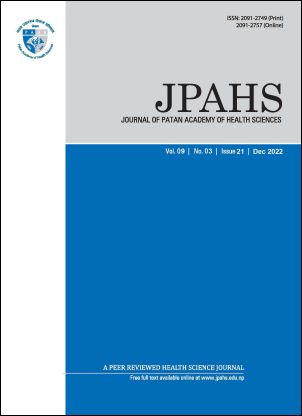Delivery site preferences and associated factors among married women of Panauti Municipality, Kavrepalanchok district, Nepal
DOI:
https://doi.org/10.3126/jpahs.v9i3.52264Keywords:
Home Delivery, Institutional Delivery, Mternal Mortality, Sustainable Development GoalsAbstract
Introduction: Maternal mortality is a top global developmental agenda. The main cause of being underutilization of available delivery services especially in a developing country like Nepal. Various socio-demographic, socio-cultural and health service-related factors affect the utilization of these services. Thus, the study aims to identify the delivery site preferences and its associated factors among the married women of Panauti municipality of Kavrepalanchok district.
Method: A cross-sectional study was conducted among the married women between the ages of 15-49 y residing in Panauti municipality. The face-to-face interviews were conducted using semi-structured questionnaires. The statistical analysis was done using Statistical Package for Social Sciences (SPSS) version 21.
Result: A total of 106 women of 15-49 y were included in the study. The proportion of institutional delivery among the participants was 68%. 90.6% of total participants would prefer health facility for their future deliveries; 7.5% were not sure about their preferences and very few (1.9%) preferred to deliver at home. The factors like knowledge regarding safe-motherhood program and age at marriage were found to be significantly associated with their delivery site preference (p<0.05).
Conclusion: In a country like Nepal, home delivery is still in practice and pregnancy and childbirth are regarded as normal life events. Thus, efforts should be made to change that perception, increasing utilization of available services and improving maternal and child health. This in turn will help to achieve the Sustainable Development Goal target in reducing the Maternal Mortality Rate.
Downloads
Downloads
Published
How to Cite
Issue
Section
License
© Journal of Patan Academy of Health Sciences
Submission of the manuscript means that the authors agree to assign exclusive copyright to JPAHS. All authors must sign a Copyright Transfer and Author Agreement form upon submission of the manuscript to the Journal. The work shall not be published elsewhere in any language without the written consent of JPAHS. The articles published in this journal are protected by copyright which covers translation rights and the exclusive rights to reproduce and distribute all of the articles printed in the journal.




